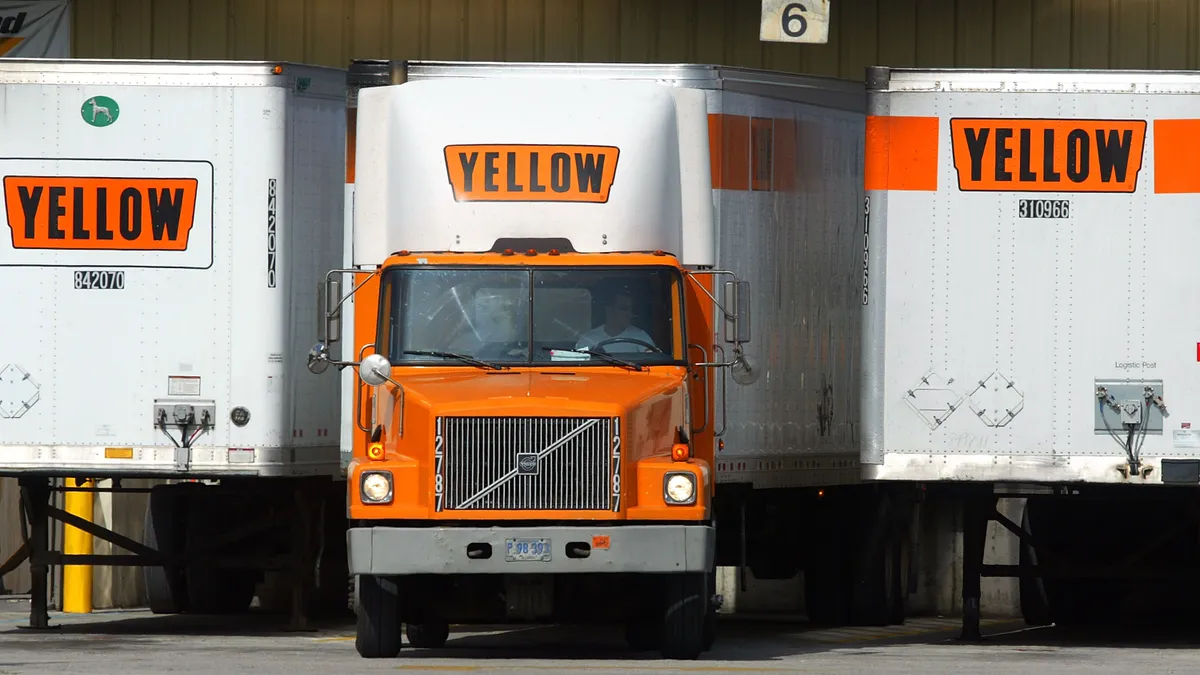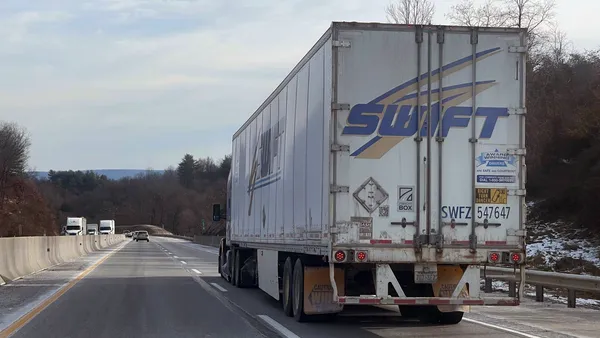Dive Brief:
- Yellow Corp. plans to sell 28 excess terminals with service territories overlapping other locations’ as part of its One Yellow transformation into a super regional carrier, CEO Darren Hawkins said during a Q3 earnings call.
- The moves will reduce the LTL carrier’s overall terminal footprint by 1,200 doors, which Hawkins said represents about 6% of the system. The company aims to have about 290 total terminals once One Yellow is complete.
- “We do not plan to sacrifice customer service or geography,” Hawkins said. “We will look for opportunities to sell the excess terminals that we own and we expect to continue derisking the balance sheet by paying down debt with these proceeds.”
Dive Insight:
One Yellow is a permanent initiative that “will not change, regardless of external inputs of economy, inflation, other pieces,” Hawkins told investors.
“This is a long-term strategy, and we are right in the final chapters of it,” he said.
The network consolidation couldn’t have better timing, though, as the carrier cuts costs and scales back its spending plans. Real estate sales have served as a source of operating income amid moderating LTL volumes.
Yellow netted $1.1 million in property disposals last quarter, which accounted for more than its YoY increase in operating income, CFO Dan Olivier said on the earnings call. The carrier lowered its full-year capital expenditures guidance range to $210 million to $230 million from its previous guidance of $250 million to $300 million.
Olivier attributed roughly half of the guidance revision to the projected timing of year-end spending. The other half consists of “some items that we scaled back on, just because of the amount of equipment needed to support lower volume trends,” he told investors.
“We do continue to work closely with the OEMs to keep a good line of sight to production capacity,” Olivier said. “But none of the reduction in our guidance was due to production delays.”
Like FedEx, UPS and other major carriers, Yellow has placed an emphasis on maximizing shipment profitability over growing volumes, especially as demand has slid from record highs in recent years. Its One Yellow transformation is expected to be complete by the end of the year.
“Throughout 2022, we have consistently kept our focus on improving the quality and profitability of the freight moving through our network,” Hawkins said. “That continues to be our plan as we execute the final steps in the transformation to One Yellow.”













